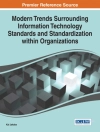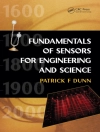In this book, which is part 1 in the series of ‘PLC Programming & Implementation, ‘ I teach you the practical aspect of PLC programming and industrial applications of PLCs. The book is very straightforward and easy-to-read. In this book, I present the principles of PLCs while not tying myself to one manufacturer or another. I included in this book extensive examples and chapter-ending problems that utilize several popular PLCs, highlighting understanding of fundamentals that can be used regardless of manufacturer.
This book will help you to understand the main design characteristics, internal architecture, and operating principles of PLCs, as well as identify safety issues and methods for fault diagnosis, testing, and debugging.
What you’ll learn in this book:
Comparison of relay-controlled systems, microprocessor-controlled systems, and the programmable logic controller, a discussion of PLC hardware and architecture, examples from various PLC manufacturers, and coverage of security, the IEC programming standard, programming devices and manufacturer’s software.Detail of programming using Sequential Function Charts.Extended coverage of the sequencer.Information on fault finding, including testing inputs and outputs with an illustration of how it is done with the PLC manufacturer’s software.New case studies.
After reading the book, you will have a good understanding and broad practical knowledge of PLCs and ladder logic programming. You will also be able to apply it to numerous real-world situations and industrial applications, such as:
Paper Mill Coal Kiln Shaft Kiln Glass Industry Cement Industry Automated Drill Press Control SCADARobot Cell with Trapped-key Accessand so much more…












